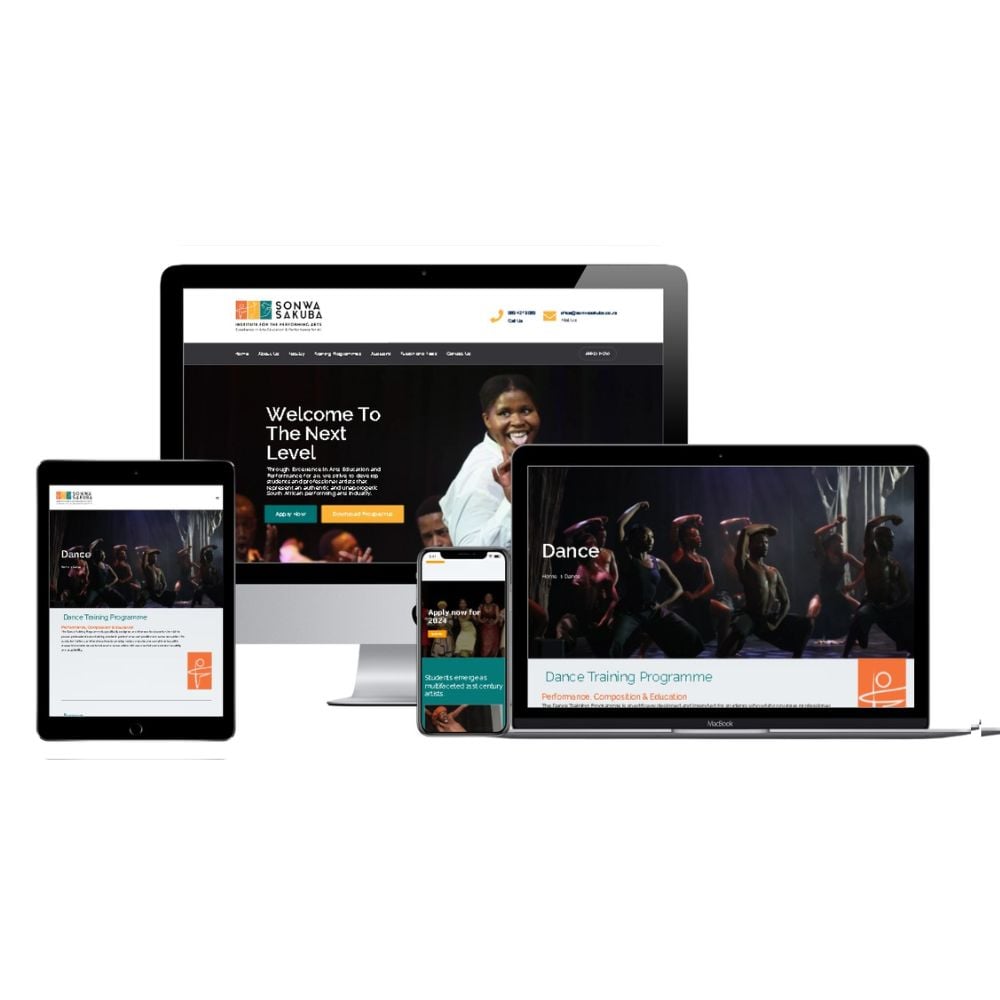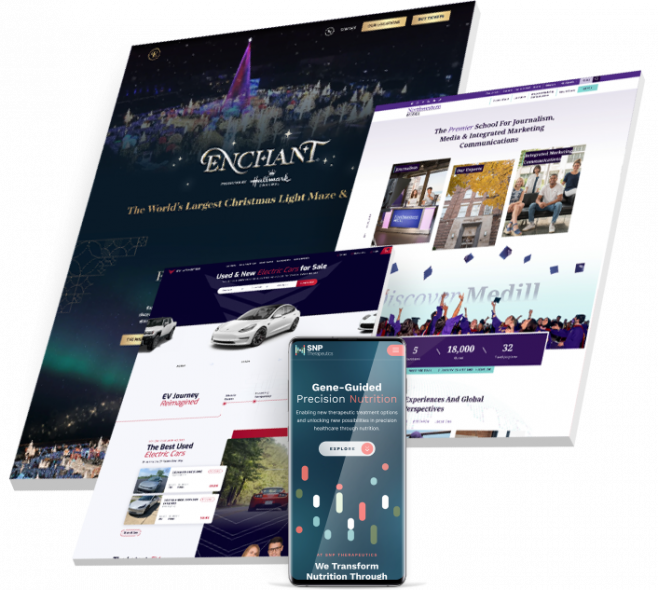Crucial Tips for Crafting a Stunning Website Design That Captivates Users
Crucial Tips for Crafting a Stunning Website Design That Captivates Users
Blog Article
Comprehending the Role of Responsive Layout in Modern Web Site Development
In today's electronic landscape, receptive design is no longer a high-end however a need in internet site development. The importance of receptive layout extends beyond customer experience-- it is additionally a crucial element in search engine optimization and access.
Importance of Responsive Design
In today's electronic landscape, the value of responsive design in internet site advancement can not be overstated. Receptive style allows websites to instantly change their design and functionality based on the screen dimension and positioning of the device being made use of.
In addition, receptive style is essential for search engine optimization (SEO) Online search engine like Google focus on mobile-friendly sites in their search results, indicating that a responsive style can considerably influence a site's presence and ranking. This optimization not only enhances the user experience yet also drives organic web traffic and increases the possibility for conversion and earnings generation.
In addition, receptive design supplies businesses a cost-efficient service by getting rid of the demand for multiple variations of a website. By enhancing internet development processes and reducing maintenance initiatives, companies can designate sources more efficiently, inevitably causing boosted return on investment. Thus, receptive layout is important in today's affordable electronic setting.
Key Elements of Responsive Style
To successfully apply receptive design, it is important to concentrate on a number of vital components that ensure optimal functionality and user experience across diverse devices. One of the fundamental components is the versatile grid design, which enables developers to develop liquid grids that immediately adapt to various display dimensions. This makes certain that content keeps proportionality and readability, despite the device being made use of.

In addition, touch-friendly navigating is essential for responsive style. Executing quickly tappable buttons and intuitive gesture controls enhances usability on touchscreen gadgets. Focusing on efficiency optimization is additionally crucial, as it improves loading times and lowers bounce rates, specifically on mobile connect with variable speed.
Last but not least, utilizing a mobile-first method makes certain that the layout is originally maximized for smaller displays prior to broadening to accommodate desktop computers. This approach ensures that vital functionality and aesthetic appeals are preserved throughout all systems, ultimately enhancing the total individual experience.
Influence On User Interaction
Responsive style considerably affects individual involvement by improving accessibility and contentment across different devices. By ensuring that a web site's layout adapts effortlessly to different screen dimensions, responsive style allows individuals to accessibility material easily, whether they are utilizing a smart device, tablet, or desktop computer . This flexibility decreases the requirement for unneeded zooming or scrolling, giving a much more instinctive and pleasant surfing experience. As an outcome, users are more probable to remain on the website much longer, discover additional pages, and interact with the material, all of which are crucial signs of increased interaction.
Moreover, receptive style contributes to faster web page filling times, which is critical for preserving individual rate of interest. Users are extra likely to abandon a website if click now it takes as well long to load, specifically on smart phones. By enhancing performance for varied platforms, responsive layout lessens filling hold-ups, keeping customers involved and decreasing bounce prices.
SEO Benefits of Responsive Layout
While enhancing individual experience is a key goal, responsive style additionally plays a critical role in enhancing a web site's search engine optimization (SEARCH ENGINE OPTIMIZATION) Responsive design makes sure that an internet site adapts to various screen sizes, removing the demand for separate mobile and desktop versions.
Moreover, receptive layout help in faster web page loading times, a vital aspect in search engine optimization. Internet search engine prefer websites that load rapidly, acknowledging that individuals are more probable to abandon sites that take also lengthy to display. By utilizing receptive layout, developers can optimize pictures and simplify content, making certain efficient packing and enhanced online search engine rankings.
Additionally, a natural URL structure across devices streamlines the indexing procedure for search engines, enhancing crawl performance. This harmony in URLs strengthens a site's authority and integrity, causing enhanced visibility in search results. In summary, receptive layout is not simply a trend yet a basic element of SEO approach, making certain web sites are both easy to use and search engine suitable.
Applying Responsive Design Approaches
In the world of contemporary web growth, executing responsive layout strategies is akin to crafting a functional canvas that changes perfectly to various display measurements. Central to this method is using versatile grid-based designs, which use family member units like portions rather than taken care of units such as pixels. This makes sure that content scales suitably across gadgets. Another important tactic includes using media queries, which allow developers to apply various designs based on pop over to these guys the attributes of the gadget, such as width, resolution, and elevation.
Receptive images and media are also important parts. By utilizing methods like CSS media questions and the HTML 'image' element, designers can serve properly sized photos based on the user's device, enhancing tons times and boosting customer experience. In addition, the consolidation of fluid typography makes certain that message is legible and aesthetically pleasing on any screen, accomplished with scalable systems like 'rem' and 'em'.

Verdict
Receptive layout comprises an important aspect of contemporary website development, considerably enhancing user experience across a variety of tools. By including adaptable formats, scalable pictures, and touch-friendly navigation, it increases user engagement and optimizes website efficiency. In addition, receptive style is critical for SEO, as it aligns with online search engine' preference for mobile-friendly sites, thereby increasing presence and natural web traffic. Inevitably, carrying out responsive design approaches makes sure enhanced ease of access and usability, making internet sites much more user-centric and reliable.
To successfully implement receptive design, it is necessary to focus on several crucial elements that guarantee optimum performance and customer experience throughout diverse gadgets.Receptive design dramatically influences individual involvement by enhancing access and complete satisfaction throughout numerous devices. By making sure that an internet site's format adapts seamlessly to different display dimensions, receptive design allows individuals to access content effortlessly, whether they are using a desktop computer, smart device, or tablet computer .While boosting individual experience is a main goal, responsive design also plays a vital duty in boosting a web site's search engine optimization (SEARCH ENGINE OPTIMIZATION)Receptive style constitutes a necessary element of contemporary site development, significantly enhancing user experience throughout an array of gadgets.
Report this page